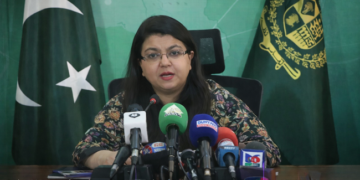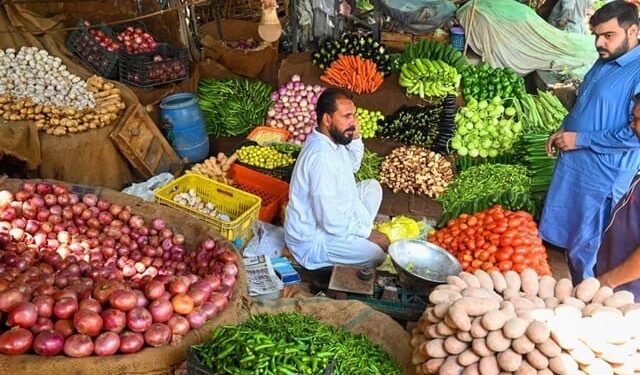Islamabad: The inflation crisis in Pakistan shows no signs of abating as the prices of 19 essential commodities have witnessed another increase during the second week of the current fiscal year 2025–26. According to the latest report issued by the Federal Bureau of Statistics (FBS), inflation continues its upward trend, directly impacting low- and middle-income households across the country.
Rising Inflation in Pakistan: An Alarming Trend
Inflation has long remained a critical issue in Pakistan’s economic landscape. However, the start of FY 2025–26 has seen a particularly concerning pattern. During the most recent week, weekly inflation surged by 0.95%, marking a noticeable uptick from the previous week’s increase of 0.73%. Moreover, the year-on-year (YoY) inflation rate climbed by 1.23%, signaling persistent inflationary pressures that could lead to further economic instability if not addressed promptly.
Weekly Inflation Snapshot: What Has Become Expensive?
The FBS report provides a detailed analysis of commodity prices based on the Sensitive Price Index (SPI). The SPI tracks the price movement of 51 essential items consumed by different segments of the population. During the past week:
Commodities That Have Seen Price Increases:
| Commodity | Price Increase (%) |
|---|---|
| Chicken (live) | 22.61% |
| Tomatoes | 13.45% |
| Onions | 6.25% |
| Potatoes | 2.79% |
| Garlic | 2.36% |
| Sugar | 1.90% |
| Gur (Jaggery) | 1.89% |
| Broken Basmati Rice | 0.84% |
These food items are daily essentials in Pakistani households, and their continued price escalation is placing a significant burden on consumers, especially those with fixed or limited incomes.
Commodities That Have Become Cheaper:
While the prices of 19 items increased, 6 items saw a slight decrease:
| Commodity | Price Decrease (%) |
|---|---|
| Liquefied Petroleum Gas (LPG) | 2.56% |
| Mustard Oil | 0.81% |
| Moong Dal (Split Green Gram) | 0.41% |
| Cooking Oil | 0.20% |
| Vanaspati Ghee | 0.02% |
| Wheat Flour | 0.02% |
Although the reduction in LPG prices offers a brief respite for households that rely on gas cylinders for cooking, the minor nature of the price decreases does little to offset the heavier impact of the overall rising food prices.
Stable Prices:
The prices of 26 essential items remained unchanged during the review period. However, given the overall inflationary environment, stability in prices is seen more as a pause rather than a permanent relief.
Impact on Different Income Groups
Inflation affects income groups differently. The Federal Bureau of Statistics segments the population into five income brackets for the SPI and calculates inflation accordingly:
| Monthly Income Group (PKR) | Weekly Price Increase (%) | Annual Inflation (%) |
|---|---|---|
| Up to Rs. 17,732 | 1.06% | -1.83% |
| Rs. 17,733 to Rs. 22,888 | 1.10% | -2.79% |
| Rs. 22,889 to Rs. 29,517 | 0.99% | -1.41% |
| Rs. 29,518 to Rs. 44,175 | 1.02% | -0.59% |
| Above Rs. 44,176 | 0.88% | -0.04% |
While annual inflation figures appear negative for all groups (due to base effects), the weekly increases show that short-term price shocks are hitting lower and middle-income groups the hardest. The poorest households, earning up to Rs. 17,732 per month, experienced a 1.06% weekly increase, highlighting their greater vulnerability to food price volatility.
Causes Behind the Rising Inflation
Several structural and external factors are contributing to the sustained inflation in Pakistan:
1. Supply Chain Disruptions:
Supply chains for agricultural products, particularly vegetables like onions, tomatoes, and potatoes, remain unstable due to fluctuating weather patterns, poor storage infrastructure, and logistical constraints.
2. Currency Depreciation:
The Pakistani rupee has remained under pressure in the currency markets, increasing the import bill for fuel, food, and raw materials. The pass-through effect from exchange rate depreciation continues to fuel inflation.
3. Rising Fuel and Energy Costs:
Although LPG prices declined marginally in the past week, the broader trend in fuel and electricity prices has been upward. Rising energy costs push up transportation and manufacturing costs, indirectly inflating food prices.
4. Demand-Supply Imbalance:
Seasonal variations and hoarding practices often result in shortages of key commodities in the market. The mismatch between demand and supply fuels panic buying and opportunistic pricing.
Government’s Response and Inflation Control Measures
The government has acknowledged inflation as a major concern and has taken some short-term steps, including:
- Crackdown on hoarders and profiteers by district administrations.
- Import of essential food items such as wheat and sugar to stabilize supply.
- Subsidized utility stores have been tasked with providing essential items at discounted rates.
However, these measures are largely stop-gap solutions, and experts argue for more sustainable policy reforms.
Economic Outlook and Projections
According to recent estimates from the State Bank of Pakistan (SBP) and the International Monetary Fund (IMF), inflation is expected to remain high in the short term. The government is currently in talks for a new IMF loan program, and fiscal tightening as part of that package may include removal of subsidies, which could further push up prices.
Economists warn that without concrete reforms in agriculture, trade, taxation, and energy sectors, Pakistan will continue to experience recurring inflation cycles that disproportionately affect the poor.
Public Sentiment and Daily Struggles
For the average citizen, these numbers translate into real-life hardship. “Chicken is now over Rs. 600 per kilogram in my area,” said Faheem Ahmed, a father of three from Islamabad. “How can we survive on a fixed income if prices keep going up every week?”
Public frustration is visible on social media, where hashtags like #InflationCrisis, #PriceHike, and #CostOfLiving are trending. Many are calling for the government to implement long-term inflation control policies and protect the purchasing power of ordinary citizens.
Conclusion: Inflation Requires Urgent Policy Attention
As inflation continues to spiral, it is becoming increasingly clear that piecemeal efforts will not suffice. Pakistan must adopt a holistic approach to control inflation, one that includes improving agricultural productivity, strengthening supply chains, managing currency volatility, and ensuring strict regulation of market practices.
The price surge in 19 essential items this week is not just a reflection of economic data—it is a signal of growing distress among millions of Pakistani households. The urgency for policymakers to act decisively has never been greater.

























